
Imagine, if you will...
Just a few months ago, Europe was blissfully calm. It seemed that the World War, which had its beginning in the US when the 13 American colonies broke away from Great Britain, was coming to an end. This war had caused immense economic and political upheaval throughout the continent, with the French Republic receiving the hardest hit. The commander who had pushed France into the most destructive phase of the war, Emperor Napoleon Bonaparte, was in exile at the beginning of 1815, ruling over the tiny island of Alba between Italy and Corsica. In France, the monarchy was brought back and Europe rejoiced at the possibility of everlasting peace.
Just when it seemed all was lost, Napoleon came back from his place of exile on March 1 and stepped onto the coast of Provence. Everywhere he went, the people welcomed him, and each military troop he encountered joined his cause. It was the same general who had single-handedly brought down the French Republic before, and now he had returned with a great enthusiasm that inspired the masses to follow him.
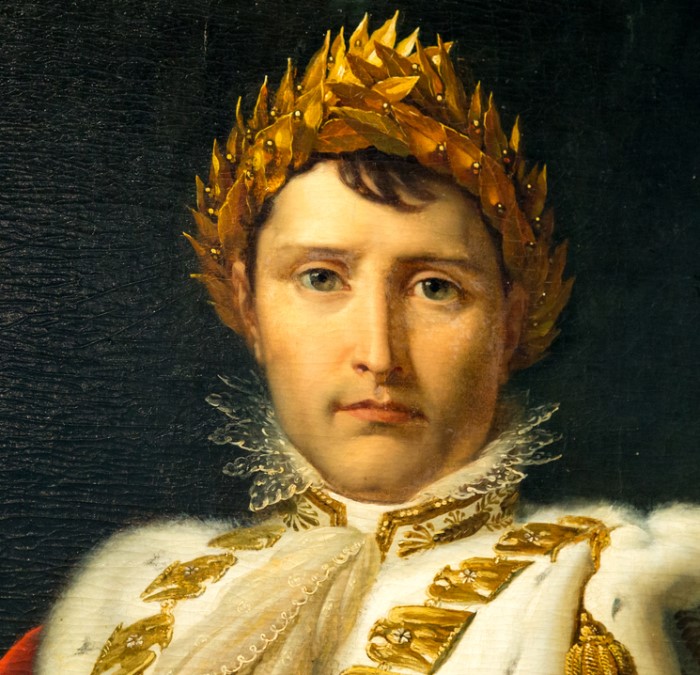
On the eighteenth day of June, 1815, the break of dawn saw Napoleon marshaling his men, with drums and trumpets blaring, on a broad field in Belgium. 68 thousand soldiers of the British-led coalition lined up in front of the ridge. This was the climax of his dream of a French empire ruling Europe and if he lost this battle, it would be the end of it all. A few kilometers south of Waterloo, the fate of the war would be decided in the great expanse of the road to Brussels. Europe was waiting to see if the war was truly done, or if it was time for a new plan.
On that June day, Napoleon Bonaparte had not yet reached the age of 46 when he faced defeat at Waterloo. His career had been remarkable: starting young and rising to the top swiftly. He was born in 1769 in Corsica, coming from a wealthy Italian family. At nine, he began his education in France at Brien-la-Chateau, near Troyes. In 1784, he got accepted into the prestigious “Ecole Militaire” in Paris and, by the time he was 16, received his diploma as an exceptional artillery officer.
As Napoleon was being educated, a huge conflict was occurring across the sea between Great Britain and its colonies in the United States. This American Revolution extended from 1775 to 1783, with the Treaty of Paris separating the continent between the US and Spain. Surprisingly, Britain became the underdog, but they managed to stay alive. On the other hand, France's House of Bourbon was significantly affected: the aid King Louis XVI provided to the US caused the kingdom to become bankrupt. France was in a dreadful financial situation yet the King still wanted to raise taxes. In 1789, he called forth the Estates-General conference to discuss the economy, but the citizens' representatives wanted to talk about the people's rights. This resulted in the French Revolution, which led to the World War.
At the time, Napoleon was a budding officer who could see the potential of the revolution and chose to take advantage of it. In September, only a couple of months after the fall of the Bastille and shortly after the Declaration of the Rights of Man and Citizen, he went back to his birthplace in Corsica and joined the revolutionaries in their fight. Between 1789 and 1799, his influence grew and he soon became one of the most prominent military commanders of the French Republic. He was commissioned to lead a campaign of conquest in the Middle East, and despite the failure in Egypt and Acre, he still returned in triumph. Before the century ended and when he was merely thirty years old, Napoleon was appointed commander-in-chief of the French army. Excitedly, he took on the role. On the 18th of Brimer, a day known for its foggy weather, the commander-in-chief of the republic orchestrated a military takeover on November 9, 1799, resulting in the termination of democracy in the nation.
After only a few years, Napoleon was ready to take the next step in his mission to make France the supreme power in Europe. His first endeavors were victorious, leading to his coronation as Emperor of France in 1804, and shortly after, his proclamation as King of Italy. But the British proved to be a formidable foe; the Battle of Trafalgar in 1805 saw Admiral Horacio Nelson's fleet crush Napoleon's navy off the coast of Spain, forcing him to abandon his plans to conquer Britain and look instead to Central Europe and the East. It all started with an immense campaign that went on for seven years and spanned from Gibraltar to Moscow. Sadly, the million-strong Grand Armée was decimated in the face of General Winter's offensive in the Russian Empire in September-October 1812, and their heartbreaking retreat back to France followed.
Over the course of the following year and a half, Napoleon experienced one setback after another, until Paris was seized by Great Britain, Russia, Prussia, and Austria, and the Bourbon dynasty was reinstated in power. Napoleon, the Emperor of France and King of Italy, was obliged to resign and flee to Elba. Ten months later he arrived at the coast of Cannes, and Europe was in an uproar. The time period starting from Napoleon's return to France is referred to in history as "the rule of the hundred days". Within just a few weeks, Napoleon had taken control of Paris: as he made his way from Caen, he managed to bring together entire regiments and created a French army - not as big as the "Grand Armée", but still a powerful force. When he got to Paris, a large contingent that had camped outside the city by order of King Louis XVIII, switched sides and joined Napoleon.
Immediately after this, the brother of Louis XVI, who was executed under the guillotine, understood his destiny and hastily departed for the northern city of Lille, and then crossed the border into Belgium. In light of Napoleon's successful reclamation of France, Russia, Prussia, Great Britain, and Austria were terrified and declared war. Their collective forces greatly outnumbered the French, which prompted them to devise a plan to launch an attack on Paris with a much larger force. Seeing the situation, Napoleon acted quickly; the Russians and Austrians were not yet prepared for battle, leaving their armies far from Paris. Meanwhile, the Prussians, with a 50,000 man force led by Field Marshal Gebhard Lebrecht von Blicher, advanced from the northeast. On the other side, the British, with 68,000 soldiers supported by the Dutch, Nassau, Hanover, and Brunswick brought their army to Belgium, with Arthur Wellesley, recently designated the Duke of Wellington, leading the charge. Excitedly, they were ready to take on the French.
Even with 73 thousand troops, Napoleon and his army were overwhelmed when facing both forces at the same time; yet, if they could slip in between them and triumph over them individually, the path to fighting the Austrians and then the Russians would be clear. A map of present-day Europe shows the deployment of forces in 1815 - an exciting situation in which Napoleon had a plan to rapidly move north and take control of the area between the Prussian and British armies, stopping them from joining forces against him. He succeeded in the two initial battles near Cater-Berra and Liney, pushing the British to the main road to Brussels and the Prussians to the east. Napoleon was certain he could defeat the British forces at the battle site chosen by Wellington to the south of Waterloo, as long as von Blicher didn't return from his retreat.
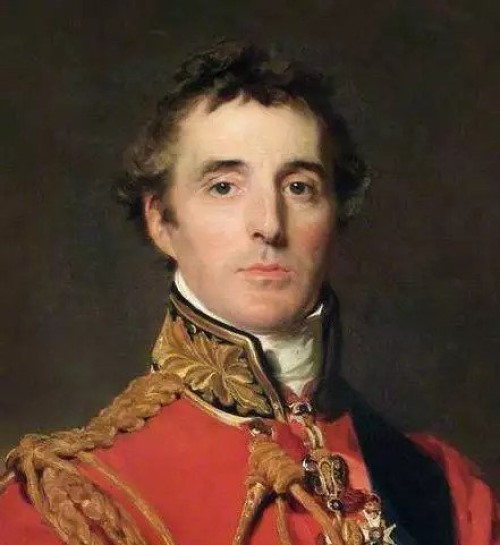
Lord Arthur Wellesley: The Duke of Wellington
The site where Napoleon fought his last battle against Wellington is still there today. Greenery spread across the area northwest of Plansanoy, south of Waterloo, and east of the R0 ring road surrounding Brussels. Not far from where the British coalition was stationed, the Prince of Orange, William II, was struck by a musket ball and fell from his horse during the Battle of Waterloo. As a way to remember the battle that marked the end of the Napoleonic Wars, King William I commanded a statue to be erected.
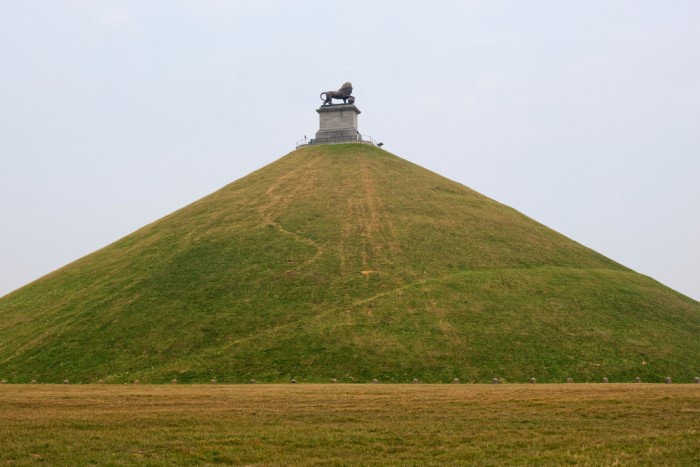
Waterloo
It's a lion facing south, towards Paris, perched atop an artificially constructed mound made from the native soil, drastically changing the landscape of the battlefield. Victor Hugo portrayed the view of the field close to Waterloo in his book "Wretches of Life" a few years after the war with great excitement. The slopes of the plane where Napoleon and Wellington fought have changed drastically since June 18th, 1815. When Wellington revisited the site two years after the war, he was outraged and shouted, "They have taken my battlefield!"
When they took the soil away to build a memorial, they stripped it of its original significance. History has been overwhelmed and no longer exists in its original form; it has been reworked to honor the victory. This slope is still seen in two large mass graves located on the left and right of the road that connects Geneva to Brussels. Interestingly, there is no French grave visible as the entire plain is a French burial site.
The morning of June 18, 1815, was still untouched, and Wellington was at an inn in Waterloo, while Napoleon was just a few miles away in his own lodging. All their troops camped outside, and it rained the entire night. In the morning, Wellington strategically situated his soldiers on the ridge, from west to east, so they were shielded from the cannons. The British seized three farms: Peplot in the east, La Sainte in the center and Hougoumont near the road to Brussels. These farms secured almost the entire front line and if Wellington stayed his ground until the Prussians returned, the Allies would triumph in the battle - and this had everyone excited!
Taking into account the weather conditions, Napoleon concluded that it would be unwise to launch an attack with the terrain being so mucky from the rain that had poured all night. He knew that his horses and foot soldiers would have to slog through the mud on their way to the adversaries from the north, up the escarpment Hugo had mentioned, which would make them tired and weary when they eventually confronted the enemy. Therefore, he chose to delay his offensive until the ground had hardened somewhat. This was a risky decision, for it would bring the Prussian army back sooner.
Being trained as an artilleryman, Napoleon was particularly worried about the slushy and marshy mud, since the recoil of the cannons would cause them to recede. In a soggy field, the cannon would sink deeper and deeper, making it increasingly more tricky to get them back in place, aim the barrel, and fire at the target. The amazing artillery of France, with 252 barrels, commenced firing. This barrage was meant to weaken the opposition's fortifications: troops would run away and withdraw from certain points in the line, which enabled a potential foot or cavalry assault that could break the defenses and put the enemy in a precarious position. From the time the guns started shooting, they never stopped until the battle ended: the atmosphere was full of whistles and the scent of gunpowder, and combatants and horsemen were hit by the rolling and detonating shells and the airborne shrapnel.
Napoleon fired off shots to soften resistance, but he bided his time until 11:00. At that point, he was determined to breach the British's defensive line.
His aim was to strike a farm located on the western portion of Wellington. The strategy was not to seize control of the flank and divide it but to induce Wellington to move his attention and resources to Hougoumont so that Napoleon could overpower the resources-drained forces in the center and essentially split the British army in two. Contrary to expectation, Hougoumont became a formidable barricade; the British soldiers discharged their weapons through the openings in the walls and the French were hit and either ran away or collapsed before they could retaliate. At half-past twelve, the French broke into the farm, yet the British clamped the gates shut, trapping 40 of them inside. Everyone was killed, except for a single 11-year-old French drummer. Napoleon continuously sent his men towards Hougoumont as the battle raged on along the British line, yet they managed to stay put.
At noon, Napoleon chose to launch an attack at the heart of the British line. The barrage of the "Grand Battery" began with 80 guns shooting shells at the troops on the ridge in a tight area. However, two things made the artillery ineffective. The first was Wellington, who commanded his army to retreat to below the ridge. Consequently, many shells only hit the ground short of their targets. The second was the mud, which caused the missiles that did reach the British soldiers to embed in the earth, resulting in just minimal harm.
A whopping 14,000 French soldiers bearing firearms moved forward to face the 6,000 British, Dutch, and Bavarian troops that were arranged in a one-thousand-meter line. Without pause, the French army charged ahead and eventually encircled the farm at La-Ha-Sainte. Unbelievably, by 2 PM they had reached the marshy area in front of the elevated ground, and Napoleon was almost assured of success at the Battle of Waterloo.
Throughout the ten years leading up to the British's victory over the French at Trafalgar, the European continent had been ravaged by warfare, causing a decrease in the quality of horses suitable for battle. Many of the armies had to settle for sub-par equines, yet the British, who had been fortunate enough to remain out of the fray, were able to maintain and even upgrade their mounts. When clashing with the French infantry at Waterloo, the British cavalrymen proved to be a crucial component; had they not been present, Wellington may well have emerged a loser.
At 2:00 p.m. With a daring move, two thousand British cavalries rode at full speed toward the French army. Their forceful attack overwhelmed the infantry and sent them scattering into the mud. Numerous units were destroyed or forced to retreat toward Napoleon's forces.
The cavalry charged forward with great enthusiasm, only to find themselves in a precarious situation as they were suddenly confronted with the "Grand Battery" cannons. The British paid a heavy price for their boldness, with a total of 2,000 cavalry - 1,200 riders and 1,300 horses - sent out to attack. However, Napoleon's assault on the center of Wellington's line was ultimately thwarted. Furthermore, 3,000 French soldiers were killed and 2,000 more were captured near the British. Most importantly, a lot of time was wasted in the process.
Napoleon was forced to shift some of his troops to the right flank because Von Bleicher was steadily advancing from the east, putting the two armies on a collision course - something he had been desperately trying to avoid.
With the French army in a hurry for a result, Wellington was heard to cry from atop the British ridge: "Tonight or von Blicher must come." In mid-afternoon, Marshal Michel Ney - a top-level leader of Napoleon's forces - spotted a decrease in the center of the British line and assumed it was a retreat, after the continuous shelling from the French guns. Since the majority of Napoleon's infantry were either fighting at Hougoumont or preparing to meet the upcoming Prussians, Ney decided to send a strong cavalry charge right in the middle of the British line. Suddenly, the French canons fell quiet and the British could make out the 9,000 cavalries in their shining armor, riding on their well-bred horses, racing toward them.
Rather than withdrawing, Ney's cavalry encountered an impressive military formation when they arrived at the British line. The infantry was organized into hollow squares, with their spears pointed toward the horses. The cannons were guarded by the formation, and the sight of the British troops was awe-inspiring and intimidating.
The horses were unable to gallop straight into the British squares with full force, as the lances were held up high. They were able to come close, but no more, and they would swing their swords. They tried to rush towards the squares, yet the horses would not progress any further into the spears. Whenever they retreated to ready another attack, the British guns would fire at them from behind; and when they returned, the squares would quickly close and they were blocked once again.
Marshal Ney quickly concluded that the cavalry charges were futile and an utter waste of energy. Consequently, he joined all of his infantry together and sent them to the front to collaborate with the cavalry to find a vulnerability in the British's defense. Unfortunately, his endeavors were to no avail as the surviving Wellington cavalry tenaciously repelled the French infantry in short-range skirmishes, despite the tremendous number of casualties. It looked like the British could hold up against the French attacks, while the Prussians were drawing nearer.
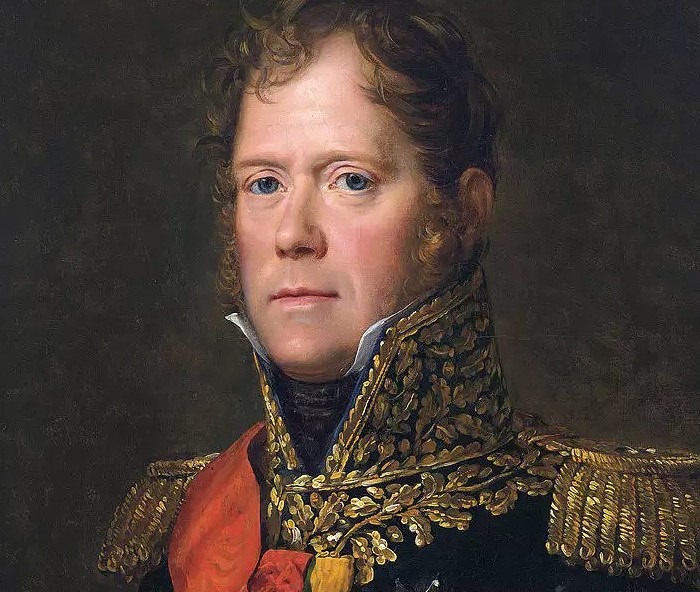
Marshal Ney
As the cavalry and infantry fought in front of the British line, some of Napoleon's regiments gained control of La Sainte, which was situated right in the middle of the battleground. This was only 50 meters away from the first British line, and the French took advantage of this closeness to shoot at the anti-cavalry squares in the vicinity of the farm. This was a definite signal to Wellington that his line was vulnerable and could be breached if Marshal Ney deployed his forces to the right spot. The members of the "Grand Battery" realized this quickly, so the artillery operators went to the center of the battlefield, protected by the soldiers who occupied La Sainte, and started to bombard the impenetrable infantry squares of the British with enthusiasm.
The Duke of Wellington was in a real bind, with a lot of his top commanders lost in the middle of the French attack. He was trapped in a square, with no apparent escape, anxiously hoping the Prussians would come to his aid. Fortunately, they showed up!
17:00 The Prussians save the day
The Battle of Waterloo stands apart as the ultimate collaboration between Britain and Germany in Belgium aside from the remarkable Christmas Truce in WWI. The British had previously come to Belgium to support the French from the approaching Germans. But this time around, it was Prussia, the ancestor of the German kingdom, that eagerly raced to the rescue of desperate Britain.
By sundown, the Prussians had already started their attack on Plansenois, which was located southeast of the French. Napoleon was forced to send troops to prevent the assault, but unfortunately, it was apparent that Blicher's army had secured a strong foothold northeast of the town. Even more, forces had to be sent to the secondary battleground. The French were wedged in the middle; they had to split their army, and Napoleon's primary strategy was unsuccessful at the tactical level.
Wellington was thrilled to hear the thunderous sound of cannons coming from a distant area, as he was aware that von Blicher had held up to his promise of forming a battle line. Prussian soldiers proceeded to advance towards the French army from the east, in the vicinity of the Paplot farm. Three hours later, Napoleon's attack had been completely thwarted.
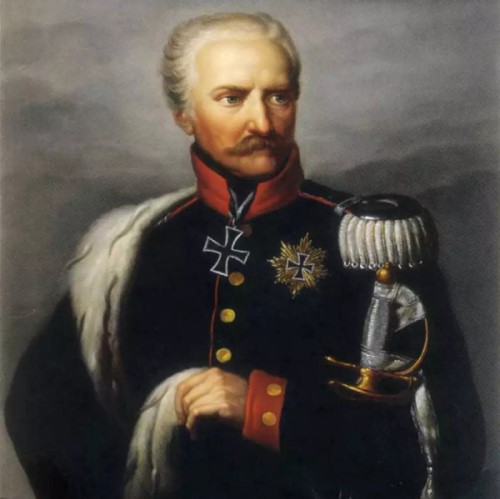
Von Blücher
At approximately 7:30 in the evening of the Belgian day, with the Prussians still sparring with Napoleon's troops at Plansanoy, and with his right flank at Peplot yet to be conquered, Napoleon made a desperate attempt by sending in his most proficient unit, the Imperial Guard, to target the center of the British line. He aimed to collapse the British line, which would then cause the Prussians to face defeat.
Napoleon's Imperial Guard was a core section of his army and was composed of loyal fighters who followed him in his fights all around Europe and the Middle East. They were also very experienced. Marshal Ney stated, "I saw four battalions of the Imperial Guard, guided by the emperor, coming up. He was willing to try again with these forces and penetrate the enemy's center. He requested me to lead them; generals, officers, and troopers, all brave; however, they weren't strong enough to withstand the enemy for long, and it didn't take long before we had to give up the enthusiasm that this attack had stirred up."
At first, Napoleon's Imperial Guard seemed to be succeeding in pushing back the British. That is, until Dutch forces came to Wellington's aid. An important moment in the battle occurred when one of their regiments clambered the top of the hill, only to be met with 1,500 British soldiers who had been lying in wait to fire upon them from short range. This created a huge gap in their offensive line, leaving some of their forces exposed to shots from either side, leading to a tremendous number of casualties. When the retreat began, it was unstoppable, ending in a massive flee of the whole army.
Wellington stood back on the same ridge he had been on earlier and hoisted his hat in the air, giving the signal for his army to move forward. All along the line, the British-Prussian coalition was victorious against the French. The Prussians at Plansanoy started to drive away the French, who began to retreat along with the rest of their forces. Wellington also advanced, crossing the territory he had surveyed earlier that morning. Now, it was littered with human and horse remains, cannon shells and crushed vegetation. The French ran south, leaving their dead behind at Waterloo. Of the 24 thousand that were killed and wounded, 16,700 were English and 5,600 Prussian. The Prussians and the British ran after the French to the city of Geneva. There, Wellington and von Blicher toasted and celebrated their win.
Arthur Wellesley, the first Duke of Wellington, made a name for himself with his triumphant win at Waterloo. At the same age as Napoleon, 46, he retired from the army three years later and stepped into politics. He held positions such as Minister of Defense and Prime Minister for the Tory Party. Upon his death in 1852 at the ripe age of 83, he was accorded the highest honor and buried in St. Paul's Cathedral in London. His statues can be found in many places in the British Kingdom and Queen Victoria honored him by naming the 33rd Infantry Regiment, the Duke of Wellington's Regiment. In 2004, this regiment was incorporated into the Yorkshire Regiment, and some of its soldiers are now in Iraq, helping to train Kurdish Peshmerga fighters to combat ISIS. Excitingly, this legacy of the Duke of Wellington lives on!
In July of 1815, at the age of 73, Gerhard Lebrecht von Bleicher, the Prince of Wahlstedt, arrived in Paris in triumph and re-established Louis XVIII on the French throne. Unfortunately, the Prussian commander's health began to decline after several months in the city, and he eventually returned to his native Silesia, where he passed away in September 1819. His legacy was honored by the Germans, who named three warships in his memory. The first was built in 1877, but its boiler exploded in 1907. The second was launched in 1908 and was famously sunk in the North Sea during the First World War against the British. The third and final vessel, the heavy cruiser Blicher, was launched on April 5, 1940, but only four days later it was the first ship to go down during the Nazi invasion of Norway.
On June 22, 1815, Napoleon stepped down from his post as French Emperor, 100 days after being re-instated. He attempted to flee the country but was caught by Britain on July 15. This time, he was taken to St. Helena, a slightly larger isle located in the middle of the Atlantic Ocean, 2,000 km from the African coast. After the failure at Waterloo, Napoleon passed away in St. Helena, a long way away from the continent he wanted to rule. Excitedly, the world had seen the last of the French Emperor's reign.
With this, one of the most tumultuous times in Europe was brought to an end - all within a single day! The French desire for supremacy on the continent was ended. In 1870, the French and Prussians clashed again in the Franco-Prussian War, resulting in the loss of Alsace-Lorraine for France. Four years later, the French and Germans clashed once more, this time with the British joining forces with the French against the Germans. The trend of France and Germany facing off against each other in battle continued until the passing of the numerous Napoleons of Europe. Everywhere on the battlefields between the two countries, there were graves - German, French, British - signifying the ultimate price of war.